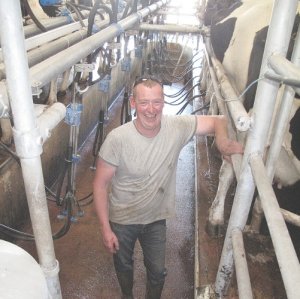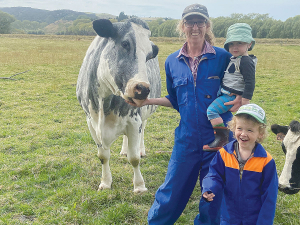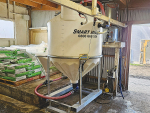He supplies the Lakeland Dairy Group based in Killeshandra, Co Cavan. The company has 2000 suppliers supplying an average of 33,0000L/supplier from an average herd of 55 cows. The furthest supplier is 160km from the main factory.
Dairy News first interviewed Minnock in 1998 when he worked on a Matamata dairy farm, then visited him in September 2000 when he worked on his family’s farm with parents Oliver and Geraldine. During a recent visit your reporter discovered he has bought 50ha from his family, added a new dairy, built a new home, married and started a family. And he is extending cow housing. “It does seem it’s all happening around here but we’ve had major setbacks [and face] challenges.”
He was milking 75 cows, aiming long term to milk 100. But three seasons ago his herd was devastated by an outbreak of BVD and Leptospirosis. Worse was to follow. Twelve months ago his cows, and those of five other farmers in the district, were hit by TB. In the initial test he lost 30 maiden heifers and some cows.
“When you are trying to rear as many replacements as possible it’s a setback. The department blamed badgers and did what they could to trap and poison them. While we’re now clear it will take us a time to get back to where we were and get to my long-term aim of 100 cows.”
He does not intend to buy stock, instead focusing on breeding his way up. His herd is Friesian and he runs pedigree bulls.
To help supplement his income he and his brother Colin have a baling business in the local district and they do contract slurry spreading. He owns a digger for drain cleaning and site preparation work.
The farm is centrally raced with 15 x 1.6ha paddocks. He harvests 16ha of baled silage each year and grows 6ha of kale for winter feed. This is grazed in situ. He uses urea in the spring and all slurry is returned to pasture.
The recent summer – June and July – were the worst in living memory for prolonged spells of wet weather. There was an occasional sprinkling of snow.
Stock are housed during winter and in bad weather to protect them and to reduce pasture damage. Stock are calved inside on slats with straw bedding with an adjacent area for feeding.
Other than the concrete milking platform the cows stock stand on wide slats built over slurry holding tanks. Small quantities of wash-down water from the milking area go to a holding tank.
Housed stock are fed silage straw and dairy ration.
“We have slurry capacity for up to six months and it only takes two days to completely empty all tanks with the use of an agitator and our slurry tank.”
Milkers are teat sprayed all season and sealants are applied at drying off. Minnock monitors copper levels during the season.















